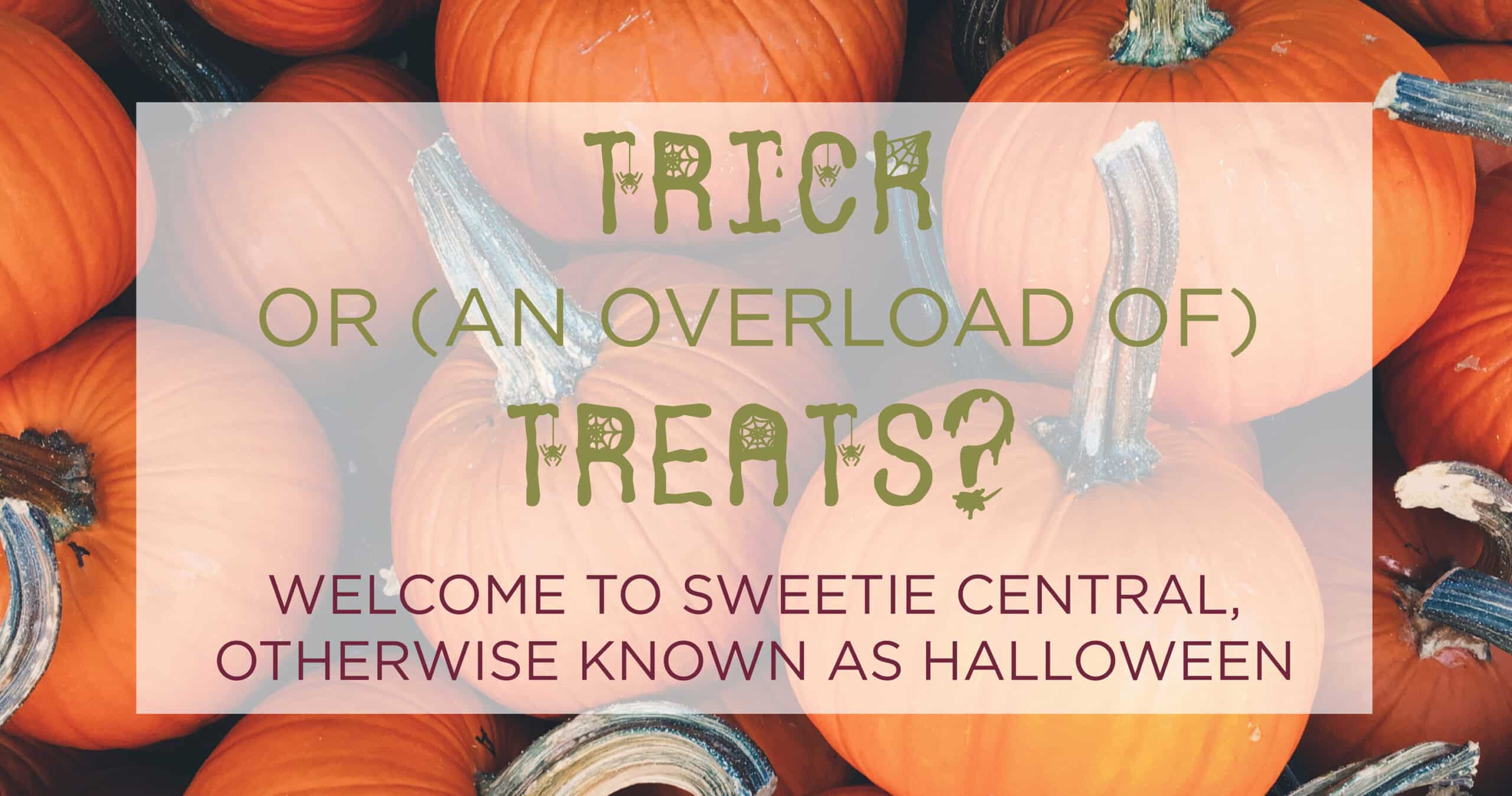
Halloween is back once again and seemingly bigger than ever, with the shops full of scary decorations, pumpkins and of course mountains of sugary goodies for young trick or treaters.
Returning home with a mountain of sweets is par for the course when it comes to trick or treating, but with our sugar intake being the subject of many news items and much debate, just how much should we be having on a daily basis, and how can we help to protect our teeth from its impact?
What is sugar?
All sugars are carbohydrates found naturally in most foods. Their main nutritional value is in providing energy. However, sugar is also added to lots of foods, such as sweets, chocolate, cakes, and some fizzy and juice drinks.
In the ingredients list, sugar added to food may be called:
- glucose
- sucrose
- maltose
- corn syrup
- honey
- hydrolysed starch
- invert sugar
- fructose
- molasses
How much sugar?
Added sugars shouldn’t make up more than 5% of the energy (calorie intake) you get from food and drink each day. This is about 30g of sugar a day for those aged 11 and over.
Fruit juice and honey can also count as added sugars, as they’re sometimes added to foods to make them sweeter.
Fruit juice is still a healthy choice (one 150ml serving counts towards your 5 A Day). However, the sugars can damage your teeth, so it’s best to drink it with a meal and no more than one serving a day.
This is because sugars are released during the juicing process. Sugars in whole pieces of fruit are less likely to cause tooth decay because they are contained within the food.
You shouldn’t cut down on fruit. It’s an important part of a healthy, balanced diet.
Check food labels
Read the nutritional information on food labels to see how much sugar the food contains. Remember that sugar has many different names.
The nearer to the beginning of the ingredient list the sugar is, the more sugar the product contains.
Look for the “carbohydrates (of which sugars)” figure in the nutrition label to see how much sugar the product contains for every 100g:
- more than 22.5g of total sugars per 100g is high
- 5g of total sugars or less per 100g is low
- If the amount of sugars per 100g is between these figures, it’s a medium amount of sugars.
Protect your teeth
Here are our top tips for preventing tooth decay through sugar consumption:
- Brush thoroughly – Make sure you are brushing your teeth thoroughly twice a day with a toothpaste that contains fluoride. Fluoride helps to strengthen your teeth enamel, stopping the decay process and preventing tooth decay.
- Floss often – Make sure you also floss every time you brush: this will help eliminate any food or plaque building up between the teeth.
- Reduce snacking – Limit eating sugary foods to meal times and avoid snacking in between meals if you can. Each acid attack on your teeth last 20 minutes, so the more often you eat a sugary food item, the more often your teeth are exposed to the harmful acid that can erode them.
- Watch out for sticky foods – The worst kind of sugary foods are the sticky kind, as these will stay in your mouth longer. Sticky foods can include dried fruit, sweets and caramel. After eating these types of foods, rinse your mouth with water to wash away as much of the sugary residue as you can. If you want to brush your teeth after eating sugary foods, wait an hour so your tooth enamel has time to recover and re-harden.
You’ve Waited Long Enough
Get in touch with us to learn about award-winning, specialist-led cosmetic, restorative and general services at Reading’s home of slow dentistry.
Get in touch
